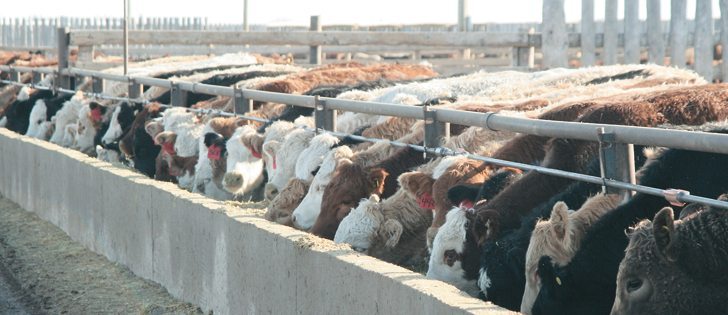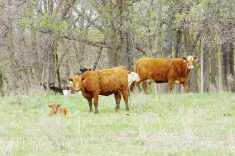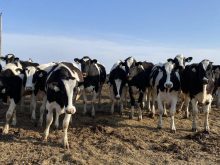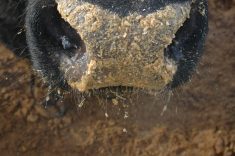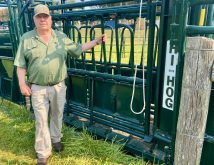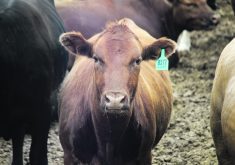The Academy of Veterinary Consultants held a Bovine Respiratory Disease Symposium in Denver in July that featured at least two talks focused on how preconditioning can prevent bovine respiratory disease.
Dr. Mark Hilton from Purdue University’s College of Veterinary Medicine presented a strong argument for cow-calf producers to consider preconditioning as part of their management strategy. BRD continues to be one of the most important diseases of beef cattle.
Hilton presented data from a National Animal Health Monitoring Study in 2011 that showed 16.2 percent of U.S. feedlot calves were treated for BRD, which was up from previous surveys.
Read Also

Beef check-off collection system aligns across the country
A single and aligned check-off collection system based on where producers live makes the system equal said Chad Ross, Saskatchewan Cattle Association chair.
He said this was unacceptable, and that our industry could certainly do a better job preventing respiratory disease and having fewer cattle die in feedlots because of BRD.
Hilton said weaning continues to be the most important risk factor.
It is a significant stress to the calf and can significantly affect the calf’s immune system, making it more susceptible to respiratory disease.
Important strategies for minimizing BRD include reducing the stress of weaning by using techniques such as two-step weaning nose tags and separating the stress of weaning from introduction to the feedlot.
Other risk factors include lack of immunity (vaccines), abrupt diet changes, castration, parasites, mixing of cattle, dusty conditions and concurrent diseases.
Numerous research trials have shown that preconditioning calves can significantly reduce the number of animals that get sick from BRD when entering the feedlot and the number of animals that die from BRD.
Preconditioning has been used in the industry for more than 50 years. It involves weaning calves at least 30 days (45 is most common) before entering the feedlot and ensuring that they are appropriately vaccinated against BRD, treated for parasites and dehorned and castrated well before weaning or sale.
Hilton presented economic data that showed cow-calf producers could see a net return of $80 per calf by using a preconditioning program.
He said these returns were largely driven by weight gain during preconditioning rather than through price bonuses received when selling the calves. The additional returns were received even in the current situation where cow-calf producers are receiving strong prices for their weaned calves.
Dr. D.L. Step from Oklahoma State University talked about a research project that compared treatment rates between auction market calves, ranch weaned calves, preconditioned ranch calves and pre-weaned ranch calves.
Step’s research found a significant benefit in terms of treatment rates to preconditioning, but it also found a similar benefit to simply pre-weaning calves 45 days in advance of the sale, which further emphasized the importance of weaning stress.
The project also found that the benefits of preconditioning were not as dramatic when preconditioned calves were commingled with high risk calves from auction markets.
New vaccines and antibiotics have significantly improved our ability to manage BRD, but Hilton questioned whether our research focus should be on other factors, such as understanding micronutrients that are important for immune function, improving pre-weaning nutrition, examining the fetal programming effect on BRD and developing vaccines to be given well before entering marketing channels.
Can we continue to defend the practice of weaning a beef calf and then immediately adding to the stress by sending it through an auction yard, mixing it with many other calves and putting it into a feedlot?
The scientific committee for the Canadian Beef Code of Practice identified BRD as a priority welfare issue.
Preconditioning programs have been implemented in the past and have certainly been controversial in terms of price bonuses for cow-calf producers.
Hilton emphasized the importance of the efficient weight gain that is created, which allows producers to create a significant economic benefit when preconditioning.
We also need to think about the benefits achieved by preconditioning in terms of animal welfare.



